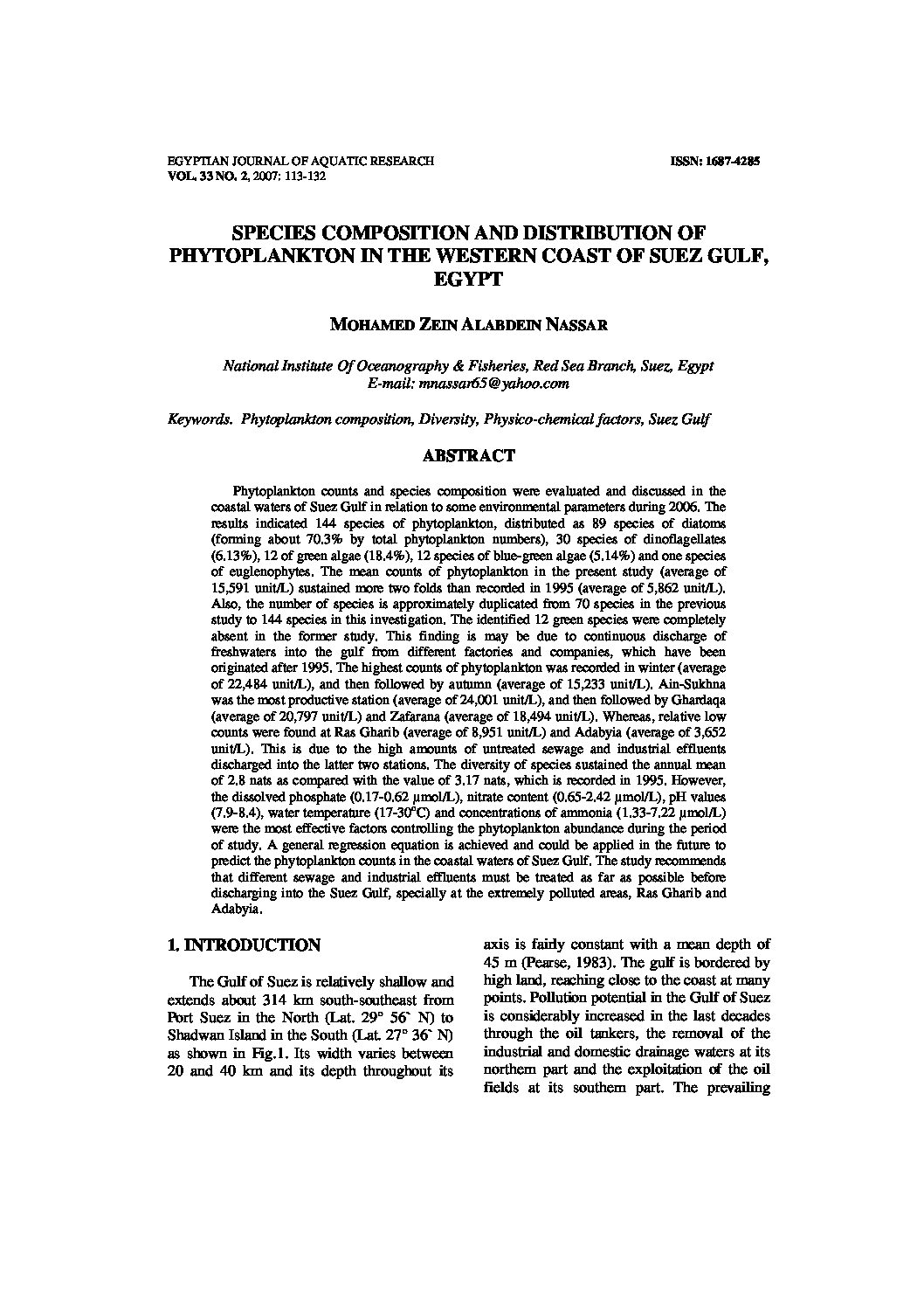Categories
vol-33SPECIES COMPOSITION AND DISTRIBUTION OF
PHYTOPLANKTON IN THE WESTERN COAST OF SUEZ GULF,
EGYPT
MOHAMED ZEIN ALABDEIN NASSAR
National Institute Of Oceanography & Fisheries, Red Sea Branch, Suez, Egypt
E-mail: [email protected]
Keywords. Phytoplankton composition, Diversity, Physico-chemical factors, Suez Gulf
ABSTRACT
Phytoplankton counts and species composition were evaluated and discussed in the
coastal waters of Suez Gulf in relation to some environmental parameters during 2006. The
results indicated 144 species of phytoplankton, distributed as 89 species of diatoms
(forming about 70.3% by total phytoplankton numbers), 30 species of dinoflagellates
(6.13%), 12 of green algae (18.4%), 12 species of blue-green algae (5.14%) and one species
of euglenophytes. The mean counts of phytoplankton in the present study (average of
15,591 unit/L) sustained more two folds than recorded in 1995 (average of 5,862 unit/L).
Also, the number of species is approximately duplicated from 70 species in the previous
study to 144 species in this investigation. The identified 12 green species were completely
absent in the former study. This finding is may be due to continuous discharge of
freshwaters into the gulf from different factories and companies, which have been
originated after 1995. The highest counts of phytoplankton was recorded in winter (average
of 22,484 unit/L), and then followed by autumn (average of 15,233 unit/L). Ain-Sukhna
was the most productive station (average of 24,001 unit/L), and then followed by Ghardaqa
(average of 20,797 unit/L) and Zafarana (average of 18,494 unit/L). Whereas, relative low
counts were found at Ras Gharib (average of 8,951 unit/L) and Adabyia (average of 3,652
unit/L). This is due to the high amounts of untreated sewage and industrial effluents
discharged into the latter two stations. The diversity of species sustained the annual mean
of 2.8 nats as compared with the value of 3.17 nats, which is recorded in 1995. However,
the dissolved phosphate (0.17-0.62 µmol/L), nitrate content (0.65-2.42 µmol/L), pH values
(7.9-8.4), water temperature (17-30o
C) and concentrations of ammonia (1.33-7.22 µmol/L)
were the most effective factors controlling the phytoplankton abundance during the period
of study. A general regression equation is achieved and could be applied in the future to
predict the phytoplankton counts in the coastal waters of Suez Gulf. The study recommends
that different sewage and industrial effluents must be treated as far as possible before
discharging into the Suez Gulf, specially at the extremely polluted areas, Ras Gharib and
Adabyia.







